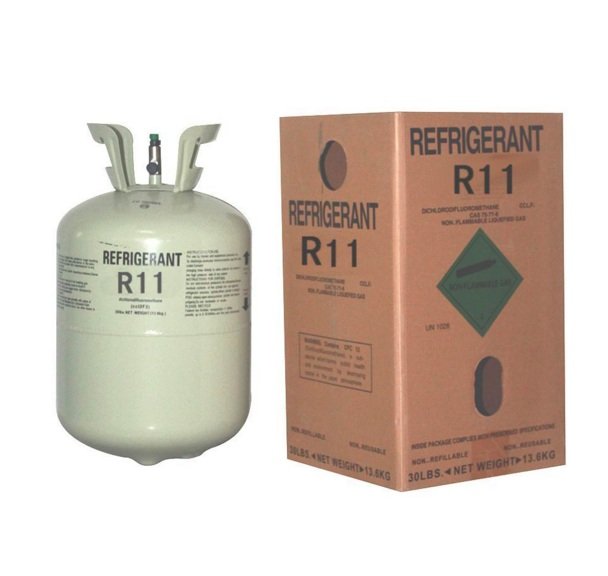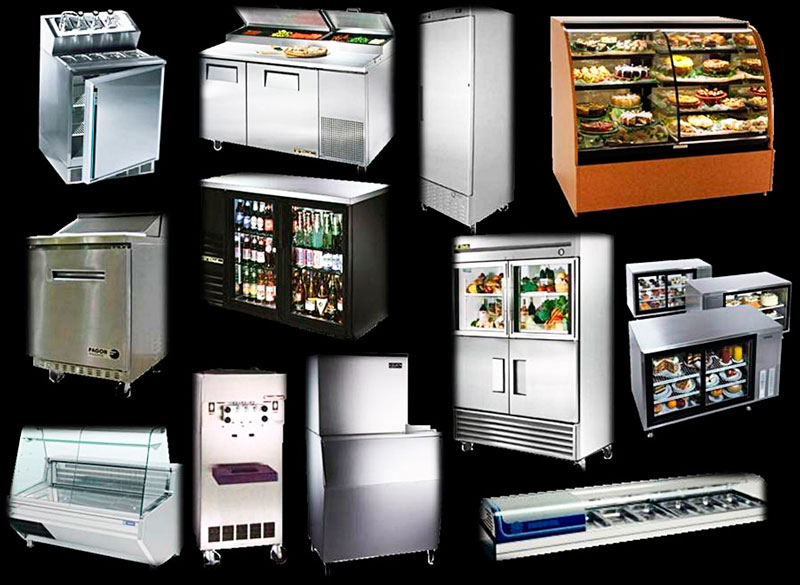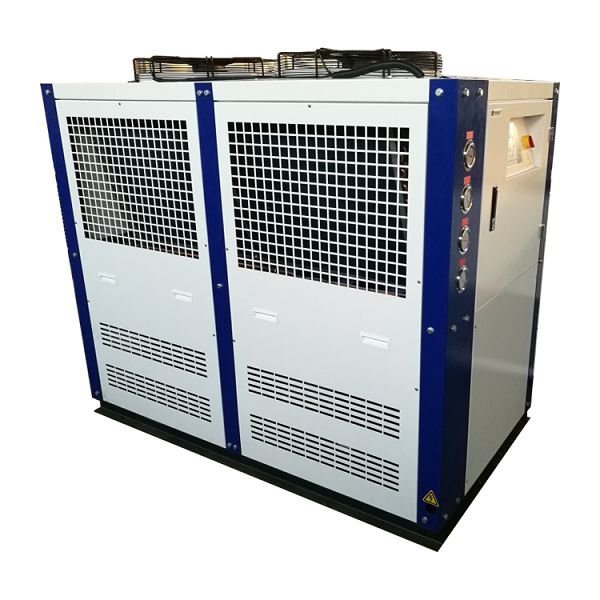How to choose the correct coolant?
Selection of the right refrigerant
When designing a refrigeration system, there are several refrigerants that can be chosen, such as chlorofluorocarbons (CFCs), ammonia, hydrocarbons (propane, ethane, ethylene, etc.), carbon dioxide, air (in the air conditioning of aircraft) and even water (in applications above the freezing point). A proper choice of coolant depends on the specific situation. Of these, refrigerants such as R-11, R-12, R-22, R-134a, and R-502 cover 90% of the market in the United States.

Source
Ethyl ether was the first refrigerant used for the trade of steam compression systems in 1850 and was followed by others such as ammonia, carbon dioxide, metal chloride, sulfur dioxide, butane, ethane. Propane, isobutane, gasoline, and chlorofluorocarbons, among others.
The industrial and big business sectors were satisfied with the ammonia and still are, although this compound is toxic. The advantages of ammonia over other refrigerants are its low cost, high COP (and, consequently, lower energy costs), its more favorable thermodynamic and transport properties and, therefore, higher heat transfer coefficients (requires heat exchangers). smaller and lower cost), greater detectability in the case of a leak and no effect on the ozone layer. The main disadvantage of ammonia is its toxicity, which makes it unsuitable for domestic use. Ammonia is used predominantly in food refrigeration facilities such as the preservation of fresh fruits, vegetables, meats and fish; refrigeration of beverages and dairy products such as beer and wine, milk and cheese; the freezing of ice cream and other foods; ice production, and low temperature refrigeration in the pharmaceutical industries and some others.
.jpg)
Source
It is noteworthy that the first refrigerants used in the domestic and small trade sectors such sulfur dioxide, ethyl chloride, and methyl chloride were highly toxic. The widespread of a few cases of serious leaks that caused injuries and deaths in the 1920s produced a public request to prohibit or limit the use of these refrigerants, creating the need for the development of a safe residential refrigerant. In 1928, in response to a request, Frigidaire Corporation, the research laboratory of General Motors, developed the R-21, the first member of the CFC refrigerants, in three days. Of several developed CFCs, the research team chose the R-12 as the most suitable refrigerant for commercial use and gave the CFC family the commercial name "Freon". Commercial production of R-11 and R-12 began in 1931 in a company formed by General Motors and E. I. du Pont de Nemours and Co., Inc. The versatility and low cost of CFCs made them the preferred ones. CFCs were also used in aerosols, foam insulation, and in the electronic industry as solvents to clean computer chips.
The R-11 is used in high capacity water coolers that serve as air conditioning systems in buildings. The R-12 is used in domestic refrigerators and freezers, as well as in air conditioners in automotive. R-22 is used in window-type air conditioners, in heat pumps, air conditioners in commercial buildings and in large industrial refrigeration systems; and offers strong competition to ammonia. R-502 (a mixture of R-115 and R-22) is the dominant refrigerant used in commercial refrigeration systems such as supermarkets because it allows low temperatures in evaporators while operating in a single stage of understanding.

Source
The ozone crisis has caused great turmoil in the refrigeration and air conditioning industry and has generated a critical analysis of current refrigerants. In the mid-1970s, it was recognized that CFCs allowed more ultraviolet radiation in the Earth's atmosphere since they destroy the protective layer of ozone and therefore contribute to the greenhouse effect that in turn causes global warming. As a result, the use of some CFCs has been prohibited by international treaties. Fully halogenated CFCs (such as R-11, R-12, R-115) are responsible for most of the damage of the ozone layer. Non-halogenated refrigerants such as R-22 have about 5% of the destructive ozone capacity of R-12. Currently, favorable ozone layer refrigerants are being developed to protect the Earth from harmful ultraviolet rays. The eleven popular R-12 was largely replaced by the newly developed R-134a, chlorine-free.
Two important parameters that need to be considered in the selection of a refrigerant are the temperatures of the two media (the refrigerated space and the environment) with which the refrigerant exchanges the heat.
To have a heat transfer at a reasonable rate, a temperature difference of 5 to 10 ° C must be maintained between the refrigerant and the medium with which it exchanges heat. For example, if a refrigerated space is to be maintained at -10 ° C, the temperature of the refrigerant should remain close to -20 ° C while absorbing heat in the evaporator. The lowest pressure in a refrigeration cycle happens in the evaporator, and this pressure must be higher than atmospheric to avoid any air filtration inside the refrigeration system. Therefore, a refrigerant must have a saturation pressure of 1 atm or greater at -20 ° C in this particular case. Ammonia and R-134a are two of these substances.
The temperature (and therefore, the pressure) of the refrigerant on the condenser side depends on the medium to which the heat was rejected. It is possible to maintain lower temperatures in the condenser (and therefore, higher COP) if the refrigerant is cooled with liquid water instead of air. However, the use of cooling water does not have an economic justification, except in large industrial refrigeration systems. The temperature of the refrigerant in the condenser can not fall below the temperature of the cooling medium (around 20 ° C in a domestic refrigerator) and the saturation pressure of the refrigerant at this temperature must be well below its critical pressure if the Rejection process will be approximately isothermal. If no single refrigerant meets the temperature requirements, then two or more refrigeration cycles with different refrigerants are used in series. A cooling system of these characteristics is called a cascade system, which will be analyzed later in this chapter.
Another desirable feature of a refrigerant is that it is not toxic, corrosive or flammable, but that it is chemically stable; that has high enthalpy of vaporization (minimizing the mass flow) and, of course, that is obtained at low cost.
In the case of heat pumps, the minimum temperature (and pressure) for the refrigerant can be considerably higher since the heat is usually extracted from a medium that is well above the temperatures found in refrigeration systems.
For more information visit the following links
- http://industrialheatpumps.nl/en/how_it_works/refrigerants/
- https://www.csmonitor.com/Business/2012/0103/Six-steps-to-choosing-the-best-refrigerator/Choose-your-size
- https://www.collinsdictionary.com/dictionary/english/cfc
- http://www.latimes.com/world/la-fg-global-deal-climate-change-20161015-snap-story.html